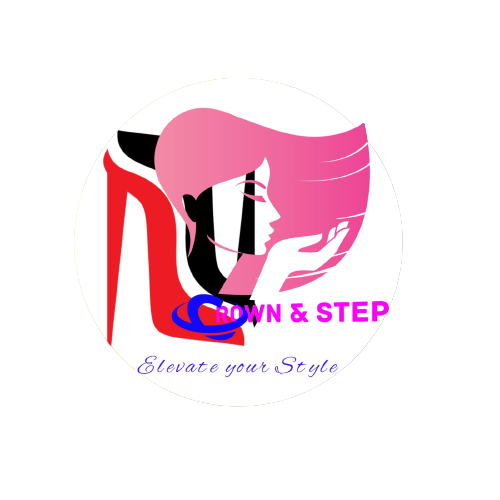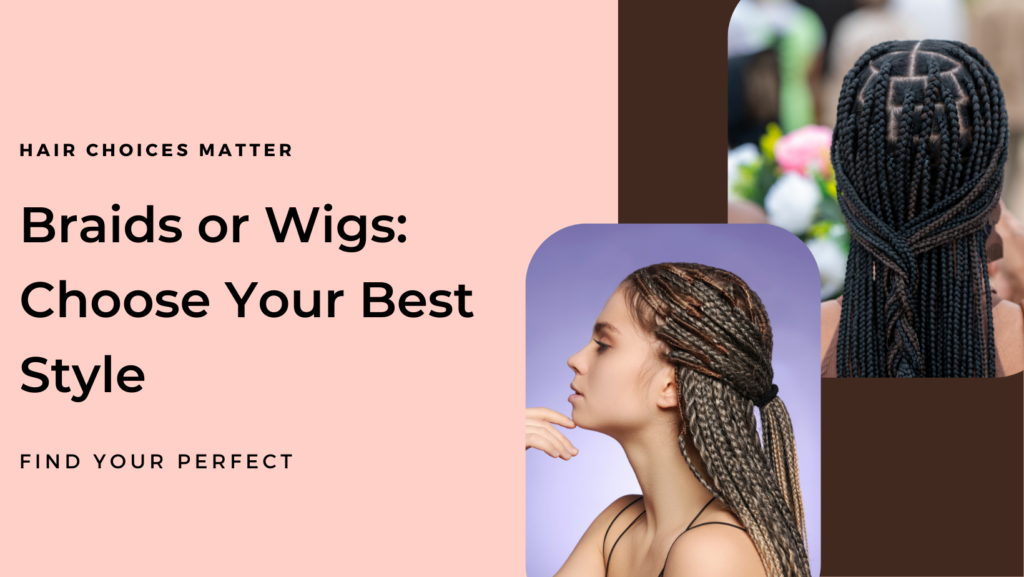More people are turning to braids and wigs as versatile hair solutions—and it’s easy to see why. Both options can transform your look, simplify your routine, and protect your natural hair. But let’s face it: the right choice depends on more than just style. Your lifestyle, daily habits, and even your patience for upkeep play a major role in what works best for you. So, which one fits your life better? Stick around—we’ll help you decide.
Understanding Braids
Braids have been a trusted hairstyle for centuries, offering more than just aesthetic appeal. They’re an art form, a cultural statement, and a practical choice for many people seeking style and functionality. Whether you’re into bold, intricate designs or classic, simple looks, the world of braids is brimming with possibilities.
Benefits of Traditional Braids
Braids pack a punch when it comes to versatility and practicality. Here are some of the standout advantages of choosing traditional braids:
- Longevity: Braids can last up to six weeks with proper care. This means less time spent on daily styling, giving you a low-maintenance yet polished look.
- Customizable Styles: From chunky box braids to the sleek lines of cornrows, there’s a style for everyone. Add pops of color or accessories like beads to make them uniquely yours.
- Protective Styling: If you’re looking to shield your natural hair from constant manipulation or damage, braids are perfect. They help retain length and lock in moisture, making them a go-to for protecting natural hair.
Braids like box braids, cornrows, and goddess braids have a rich cultural legacy but also deliver practicality for modern, busy lifestyles.

Photo by Anastasia Shuraeva
Challenges of Braids
Despite their undeniable beauty, wearing braids isn’t always smooth sailing. Here’s what you might face:
- Time-Intensive Installation: Getting braids done requires a lot of patience. Depending on the style and thickness, sessions can take several hours or even a full day.
- Scalp Tension: When installed too tightly, braids can cause discomfort and even lead to traction alopecia over time. Always be mindful of how they’re done.
- Maintenance Needs: While you won’t need to style them daily, regular care is essential. That includes moisturizing your scalp to avoid dryness and cleaning the braids gently.
Being aware of these potential downsides can help you prepare and manage your braids with care.
Who Are Braids Best Suited For?
Braids cater to a wide range of people, but some lifestyles make them an especially good choice:
- Active Lifestyles: Whether you’re hitting the gym or heading outdoors for an adventure, braids provide a worry-free option that stays intact regardless of activity.
- Budget-Friendly Solutions: While the upfront cost of braiding can seem high, it’s an economical choice over time. Since they last for weeks, you save on frequent salon visits.
- Commitment to Upkeep: If you’re willing to put in the effort to maintain them properly, braids can be your best hair companion. Regular nightly wrapping and occasional scalp moisturizing are musts for keeping them fresh and neat.
If you value practicality, style, and longevity all rolled into one, braids could be an ideal match for your lifestyle.
Exploring Wigs
Wigs have evolved far beyond their reputation as mere accessories. They’re now a powerful, versatile solution for individuals looking to redefine their hairstyle, protect their natural hair, or conveniently switch up their look. Whether you’re considering wigs for practicality or self-expression, understanding their benefits, challenges, and who they’re best suited for can help you make an informed decision.
Advantages of Wigs
Wigs bring a unique set of benefits that make them a popular choice for many. Here are some of the key reasons they’re worth considering:
- Ease of Installation and Removal: Unlike braids or extensions, wigs can be installed or taken off in minutes, saving you time on busy mornings. This can be a lifesaver for anyone who struggles with complex hair routines.
- Protection for Natural Hair: Wigs act as a barrier, shielding your natural hair from heat styling, environmental damage, or harsh chemicals. This means less breakage and healthier hair in the long run.
- Diverse Style Options: Want a short bob today and luscious waves tomorrow? With wigs, it’s possible. From straight to curly, natural shades to vibrant colors, the variety is endless.
- Time-Saving Solution: Perfect for those who prefer a low-maintenance lifestyle while still having the freedom to experiment with their look.
Wigs essentially give you the freedom to express yourself without permanently altering your natural hair.
Drawbacks of Wigs
While wigs have countless perks, they’re not without their downsides. Here are some factors to keep in mind before jumping into the wig world:
- Initial Cost: High-quality wigs, especially those made from human hair, can be pricey. Synthetic wigs may come at a lower price but often lack the longevity and natural appearance.
- Comfort Issues: Wearing a wig for long hours can sometimes feel heavy or itchy, especially in warmer climates. Proper fitting and breathability are key to minimizing discomfort.
- Learning Curve: If you’re new to wigs, learning how to properly secure, style, and care for them can take time. Missteps could lead to an unnatural appearance or damage to the wig itself.
- Maintenance Requirements: Human hair wigs require washing, conditioning, and styling, much like real hair. This upkeep can be time-consuming and might not suit everyone.
Understanding these challenges helps set realistic expectations and ensures you’re prepared for what wig ownership entails.
Who Would Benefit Most from Wigs?
Wigs can be life-changing for the right person, depending on their lifestyle and needs. Here’s who might gain the most from incorporating wigs into their routine:
- Anyone Seeking Low-Maintenance Options: If you dread spending hours styling your hair or regularly visit the salon, wigs can simplify your routine dramatically.
- Style Chameleons: For those who love to change their hairstyle frequently without the long-term commitment (or damage), wigs are an ideal solution.
- Hair Protection Advocates: If you’re trying to grow out your natural hair or avoid further damage, wigs can act as the perfect shield against environmental stressors.
- Individuals Facing Hair Loss: Whether hair loss stems from medical treatments, conditions like alopecia, or natural thinning, wigs restore confidence and provide a sense of normalcy.
Ultimately, wigs offer flexibility and practicality to people from all walks of life—whether you’re after an everyday look or something dramatic for a special occasion.
Comparative Analysis: Braids vs. Wigs
Choosing between braids and wigs is more than just a hairstyle decision—it’s a commitment that can impact your time, budget, and the health of your natural hair. Understanding the key differences in time investment, costs, hair health, and styling flexibility can help you determine which option aligns best with your lifestyle. Let’s break it down.
Time Commitment and Maintenance
One major difference between braids and wigs is the time required for installation and daily upkeep.
- Braids: The installation process for braids can be lengthy, taking anywhere from 4 to 8 hours depending on the style and thickness. Once installed, braids tend to be low-maintenance daily but require occasional scalp moisturizing and gentle cleansing.
- Wigs: Wigs, on the other hand, are quicker to install. Most can be put on in a matter of minutes, saving valuable time. Maintenance for wigs involves regular washing, conditioning, and styling to keep them looking fresh, especially for human hair wigs.
For someone with a tight schedule, wigs might win for convenience. However, for low daily effort after the initial investment of time, braids could make life simpler.
Cost Comparison
When it comes to costs, both options have their pros and cons depending on your budget.
- Braids: Professional braiding can range from $150 to over $400 depending on the style and location. Since braids typically last 4 to 8 weeks, the cost can add up over time if you regularly refresh them.
- Wigs: The price of a wig varies greatly. High-quality human hair wigs can exceed $300, but synthetic options are more budget-friendly at $50-$150. Unlike braids, a well-made wig can last for a year or more with proper care, making it a cost-effective long-term solution.
If you’re looking for upfront affordability, braids may seem more appealing. However, for durability and longevity, wigs might provide a better return on investment.
Impact on Natural Hair Health
The health of your natural hair is another critical factor when choosing between braids and wigs.
- Braids: Braids are considered a protective style, but improper installation (e.g., too tight) can lead to scalp discomfort and even traction alopecia. To avoid damaging your hairline, ensure your stylist doesn’t apply excessive tension.
- Wigs: Wigs can protect your natural hair completely, especially when worn with a proper cap or band. They allow your scalp to breathe and make moisturizing and cleaning your natural hair underneath much easier. However, improper wig care (such as tight wig caps or heavy adhesives) can cause scalp irritation or damage to edges.
Both styles can promote healthy hair when managed correctly, but wigs give easier access to your natural hair for regular care.

Photo by RDNE Stock project
Styling Versatility and Aesthetic
Both braids and wigs bring unique options for expressing your personal style, catering to anything from casual days to glamorous events.
- Braids: With options like box braids, cornrows, and knotless styles, braids are highly customizable. You can accessorize with beads or add extensions for length and color. However, changing your look mid-installation isn’t easy—you’re committed to the style for several weeks.
- Wigs: Wigs offer unrivaled versatility. Want a sleek bob today and curls tomorrow? With wigs, it’s possible. You can switch between textures, lengths, and colors effortlessly, making them an excellent choice for the style-savvy or those needing flexibility for different occasions.
For adaptability and creative freedom, wigs hold the upper hand, while braids shine with their long-lasting beauty and low-effort elegance.
Each option has its strengths and challenges. Your final decision will depend on the balance between your personal style, maintenance preferences, and how much time and money you’re willing to invest. Both are valuable, but knowing these details helps you make the perfect choice.
Lifestyle Considerations
When choosing between braids and wigs, your lifestyle is a key factor that can heavily influence which option fits best. Whether you lead an active life, navigate professional settings, or juggle a packed schedule, it’s important to consider how these hair solutions complement your daily routines.
Active Lifestyles and Outdoor Activities
Braids and wigs offer entirely different levels of practicality when it comes to staying active or enjoying time outdoors. For those who spend significant time working out or being exposed to elements like water or heat, the choice matters.
- Braids: A clear winner for durability when you’re active. They are tightly secured and unlikely to shift during rigorous activities like running, hiking, or swimming. Plus, braids are low-maintenance after installation, needing only basic upkeep to keep the scalp moisturized. However, humidity and excessive sweating might cause minor frizz over time.
- Wigs: These can be trickier for active lifestyles. While there are secure-fitting wigs suited for movement, sweat and heat might make them less comfortable over long periods. Swimming with a wig, for example, is particularly challenging unless it’s specially designed for that purpose. Synthetic wigs are more heat-resistant, but they won’t offer the same staying power as braids in an outdoor or athletic environment.
Depending on how much physical activity you engage in, braids offer the stability and practicality needed for intense movement, while wigs may require some extra effort to adapt.
Professional and Social Settings
Hairstyles can subtly signal personality and professionalism, so it’s worth thinking about which option aligns better in workplace and social contexts.
- Braids: In professional settings, braids can make a bold yet polished statement. Styles like knotless braids or classic cornrows offer elegance while neatly maintaining natural hair. Depending on the workplace culture, braids are often appreciated for their cultural significance and clean presentation. They’re also versatile enough to transition easily into social events or nights out.
- Wigs: Wigs can be tailored to meet the expectations of formal environments, whether it’s a sleek bob for the office or soft curls for a presentation. Their ability to mimic natural textures makes them a top choice for creating tailored looks. Socially, wigs shine due to their adaptive nature—quickly achieving glamor or understated sophistication with minimal hassle.
The key difference here is adaptability. Wigs excel in situations where style changes are frequent, while braids provide lasting consistency in a single, polished look.
Time Availability and Convenience
Your schedule plays a huge role in deciding whether wigs or braids align better with your pace of life. Both options come with different time commitments that might affect how seamless they are to integrate.
- Braids: Installation is time-intensive, often requiring several hours at a salon. However, once completed, you’re set for weeks. Daily maintenance is straightforward but involves keeping your scalp moisturized and occasionally refreshing the braids to preserve neatness.
- Wigs: If time is of the essence, wigs offer convenience at an unmatched level. Most styles can be installed or removed in minutes, letting you bypass a lengthy prep routine each morning. That said, human hair wigs require occasional washing and styling, which may offset their upfront convenience.
For those balancing tight schedules, wigs offer quicker morning routines but need intermittent maintenance. Braids might demand your time initially but allow for more freedom over weeks to come.
Braids and wigs each have qualities that suit different scenarios, from fast-paced lives to moments where you can carve out more time for long-lasting solutions.
Conclusion
Choosing between braids and wigs boils down to what works best for your unique lifestyle. Both offer solid advantages, from the protective nature of braids to the instant versatility of wigs. Your decision should align with your daily activities, budget, and how much time you want to invest in upkeep.
If you’re someone who values a long-lasting style with minimal daily effort, braids could be your best bet. On the other hand, if you love to switch up your look quickly or need a low-commitment option, wigs might take the win.
Think about what fits your routine and personal preferences. Whether you go for the timeless charm of braids or the endless flexibility of wigs, your choice should make you feel confident and comfortable. What’s your go-to style? Share your thoughts in the comments!

